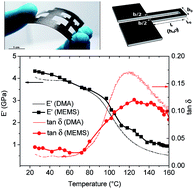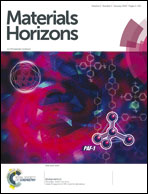Advanced thermo-mechanical characterization of organic materials by piezoresistive organic resonators
Abstract
We present the piezoresistive transduction of an all-organic microelectromechanical system (MEMS) based resonant sensor fabricated through a low-cost and highly versatile process. The MEMS resonator consists of a U-shaped cantilever beam resonator made of a thin layer of a piezoresistive nanocomposite (SU/8 epoxy resin filled with industrially produced carbon nanotubes, or CNTs) deposited on flexible substrates such as polyethylene terephthalate (PET), polyethylene naphthalate (PEN) and paper. The structures have been fabricated using a commercially available vinyl cutting machine. External piezoelectric actuation has been used to drive the devices into resonance while integrated piezoresistive transduction has been chosen as the resonance sensing approach. The achieved measurements validate the concept of dynamic piezoresistive-transduced organic MEMS. The sensitivity to temperature is comparable with that of state-of-the-art inorganic temperature sensors, thus confirming the high accuracy level of the new resonators. As an example of a sensing application, the present MEMS sensors are employed as microdynamical mechanical analyzers enabling the rapid, low-cost and accurate characterization of the viscoelastic properties of organic materials.


 Please wait while we load your content...
Please wait while we load your content...